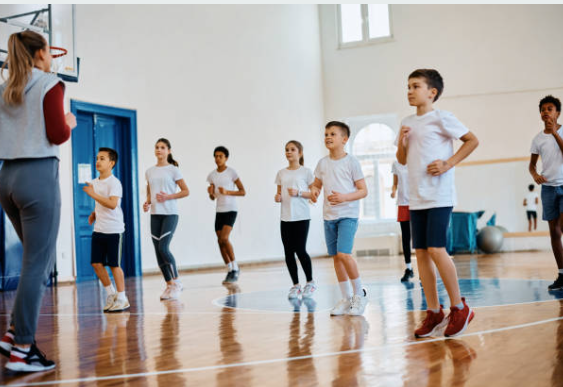Teacher to Teacher: Getting School Administrators on Board with QDPE

Being a health and physical educator is rewarding. Your work has an impact on the lives of your colleagues, your students and their parents.
But it’s also a career with its challenges. We want our members to be able to connect and share how they handle the issues that come up in their classrooms and schools so we can all continue to learn and build our professional repertoires together.
In this section of the Journal, we feature questions posed by teachers (by way of social media or email), and answers directly from their colleagues.
Question:
I am having a hard time convincing my principal of the value of QDPE. She is generally supportive of the value of physical education, but seems reluctant to commit more time or resources. What can I do?
Answer #1
Shannon Kell, assistant professor with the Department of Health and Physical Education, Mount Royal University, Calgary.
I suggest starting with what you know your administration will support and growing from there. It sounds like she sees the value of PE but not on as large of a scale as you'd like her to. Perhaps begin by suggesting you try one grade as a 'pilot project' and provide QDPE for that grade, keeping track of student academic progress, attention span and overall behaviour. These records (formal or anecdotal) may help build your case for expanding QDPE to more grades and, hopefully, the entire school.
Answer #2
Susan MacDonald, physical education program coordinator and physical education teacher, Centre for Learning Alternatives, Prince George, B.C.
School administrators are faced with very tough decisions regarding school priorities. The increased demand to collect quantitative data often means that some subject areas do not receive the focus they deserve. Unfortunately, physical education is sometimes one of those areas. While administration may value physical education, they also feel QDPE will take away from other subject areas, when in reality it can enhance them.
I really feel the key is explaining to administration how this can work. Begin by identifying key staff members who share your beliefs and share some ideas with them about how you would like to integrate QDPE into your school. Ask for their ideas, as well. Meet with your administration and explain your vision and offer some tangible ideas. Ask your administrator for 10 or 15 minutes at a staff meeting and share some ideas to get the staff engaged. It is important to address the benefits to both students and staff while demonstrating that it is not more work for them and will positively impact the classroom.
QDPE lends itself to both cross curricular teachings as well (think of a practical heart rate lesson that could provide both math and science connections) as well as student leadership opportunities that will create greater connectivity within the school. It really is a matter of helping show the possibilities and how an increased focus on QDPE will enhance the school climate. I remember having this discussion with an administrator many years ago and when she finally agreed to allow me to facilitate a morning activity as part of our new QDPE focus, both she and the staff were amazed at the increased ability of the students to focus and concentrate for longer periods of times on those days. Behaviour referrals were reduced immensely as well, it really was a win/win for everyone.
Current research supports the learning benefits for students who are receive quality daily physical education as well, which means that quantitative data also improves. Good luck! (Here's some research to back up your argument: http://blogs.edweek.org/edweek/schooled_in_sports/2012/01/strong_evidence_of_link_between_physical_activity_academic_success.html?cmp=ENL-EU-NEWS2
Answer #3
Cheryl Tanton, Department of Education, Early Learning and Culture,
Summerside, P.E.I.
Where there are challenges there are opportunities. It's your time to capitalize on this general support from your administrator and move reluctance to understanding and buy-in. You may want to start with a plan — a comprehensive school health plan — and make her an offer she can’t refuse!
An abundance of data can be found on the PHE Canada website to inform how physical education can enhance the health, well-being, academic performance and success of your students. Check to make sure the students in your school are currently receiving the provincially/territorially authorized instructional time for physical education. Examine how other schools and school districts have implemented creative scheduling models to support and strengthen their physical education programs.
Access your allies! Share your skills and knowledge with the school staff through informal conversations and formal presentations at staff meetings. Show colleagues how physical education can benefit their work with the students and also the health and well-being of the staff. Align yourself with school champions.
Are families supportive of the physical education program? Tap into families and allow them to become advocates. Now is the time to celebrate the great things that are happening in your program with their children through newsletters, blogs, live performances, video feeds and social media.
Insert PE into your ABCs and 123s. Demonstrate how literacy and numeracy can be infused and integrated into your physical education program in a fun way. Make explicit cross-curricular connections and share your knowledge and skills with teachers by offering to collaborate with them to co-plan and co-teach their language arts and math lessons to up the fun factor while increasing literacy, numeracy and student achievement. Increasing physical education time makes stronger readers and writers.
Answer #4
Ted Temertzoglou, VP Teacher & Student Success, Thompson Educational Publishing, Twitter: @LifeIsAthletic
The first piece of advice I have is to try to find out what your principal values most or what her priorities are for the school year based on her School Improvement Plan (SIP) and Board Improvement Plan (BIP). My guess like most schools in Canada is that her priorities are literacy, numeracy and mental health. That being said position health and physical education /physical literacy as the vehicle that can connect all this together.
Purposeful daily physical activity/ physical literacy games can enhance student academic readiness, and reduce boredom and disrupted behavior. Once she see's that it’s not extra work and improves academic readiness she might be open to moving closer to your line of thinking. Try this game first in a staff meeting: Do a five minute presentation on the value of physical literacy (that might involve three slides) then create three multiple choice questions based on your presentation to the staff and play “show me your answer.” Stress that kids don’t care how much we know until they know how much we care, and that they may not remember everything we are trying to teach them but they will remember how we made them feel.
A key message in The Ontario Ministry of Education’s document Stepping Stones and Supporting Young Minds is that ‘if kids don’t feel good about themselves, they are certainly not going to learn anything.’ Our physically literate rich HPE curriculum has the potential to make kids feel better every day and give them the tools to do that for the rest of their lives.
I would also show her UNESCO’s Policy Document on Quality Physical Education, Sum up by stating the physical literacy is the glue that ties in all the other literacies. If our kids don’t feel good about themselves, if their mental health is low, it doesn’t matter how much time we sit them down to learn, test scores will still be low.








